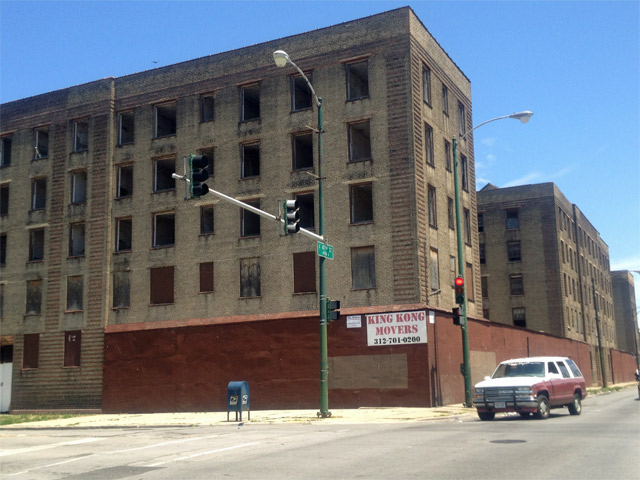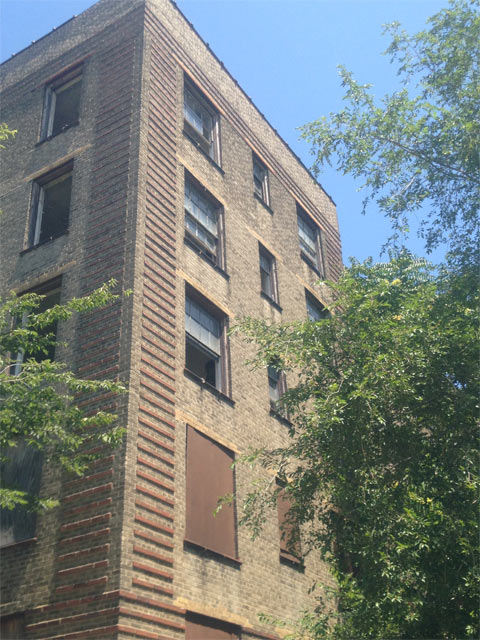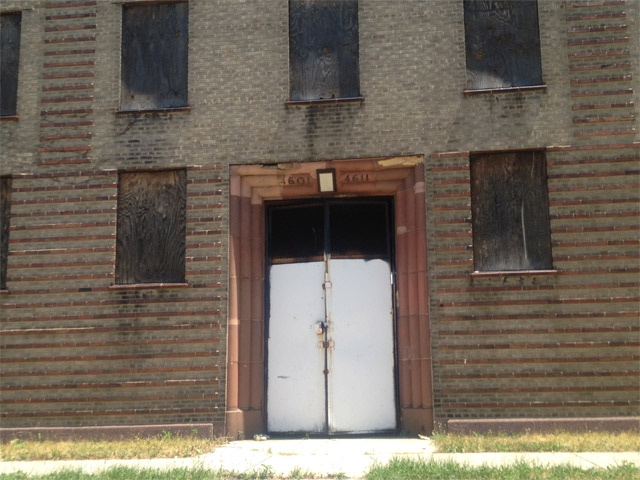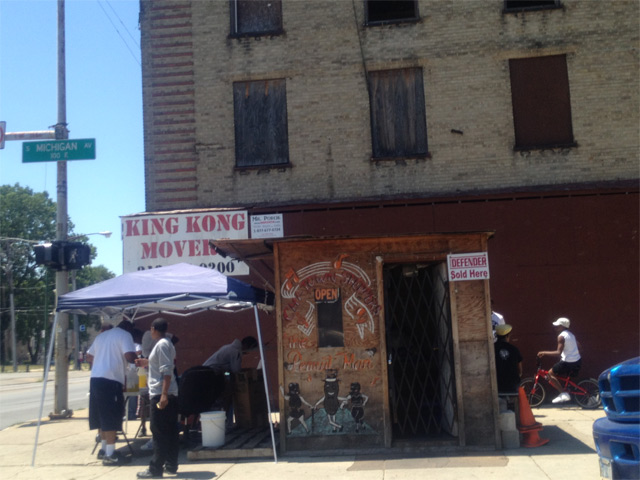Rehabbing The Rosenwald: New Plan Could Restore Bronzeville Buildings and Philanthropist's Legacy
By JoshMogerman in News on Jul 8, 2012 8:30PM
Moving around Bronzeville, it is pretty hard to avoid the Rosenwald Apartments. The massive apartment block looms over a particularly desolate stretch of 47th Street. Sadly, today it looks more like The Carter from “New Jack City” than the elegant expression of one of Chicago’s greatest philanthropists, but there is new hope for the once-proud home for much of the City’s African American elite.
When it was built in the 1929, the complex of over 400 handsome apartments was funded by Sears Roebuck and Company President Julius Rosenwald to offer housing for working and middle class African Americans who could not find appropriate lodgings in the messy nest of slum and kitchenettes contained by the limited neighborhoods open to the black community. This was not public housing; the apartments were pricier than other offerings in the Black Belt. For a time, most every prominent African American figure in the city lived in the Rosenwald, including Gwendolyn Brooks, Joe Louis, Nat King Cole and Ralph Ellison. Chicago Magazine’s Whet Moser pulled a great 2002 quote from Quincy Jones’s autobiography Q about his memories of the buildings:
Sarah Jones was quite a woman before she got sick. She ran the Rosenwald Apartments over on 46th and Michigan Avenue. Back then the Rosenwald was the place for the colored in South Side Chicago. It was for the high-and-mighty of the colored race only. There must've been a hundred apartments in that place. Huge places with big bedrooms, stone staircases, a fountain in the plaza, fine wood floors. It would break your heart to see it now. It's like a prison. Metal gates and security guards, all kinds of folks shuffling in and out, it's a mess.Sadly, things have gotten much worse in the decade since Jones’ book was published. Gone are the manicured courtyards. The once handsome buildings have moldered and rotted, losing some of their finest architectural details. And that has also eroded the legacy of the buildings’ namesake. Julius Rosenwald is now known more for funding the Museum of Science and Industry, but the bulk of his Sears fortune went to addressing issues of inequality for African Americans: endowing the Tuskeegee Institute and building thousands of sorely-needed educational facilities in black communities in the South. The Rosenwald (originally named the Michigan Avenue Garden Apartments) was his vision in brick and mortar here in Chicago, offering quality housing and opportunities to black-owned businesses.
This week, there is another opportunity to reclaim the building. The Community Development Commission will hold hearings on Tuesday to look at a developer’s TIF scheme to rehab the Rosenwald. The $25 million plan would stabilize the buildings, update electrical and plumbing, install elevators and offer up 300+ apartments for mixed-income renters. While we love the idea of actually using tax-increment financing funds to bring back an important blighted property that could positively impact the entire neighborhood around it, there are legitimate criticisms of the plan from its neighbors. Blair Kamin published a letter from frustrated area homeowners who call the project’s design “unimaginative and lackluster,” while expressing concern about a massive project that will further concentrate low-income families in one of the city’s poorest neighborhoods. Given other projects in the area along Cottage Grove, they may have a point. None the less, we remain hopeful that the building and its namesake can re-enter the city’s consciousness.
Julius Rosenwald: A Force for Change from Spertus Institute on Vimeo





